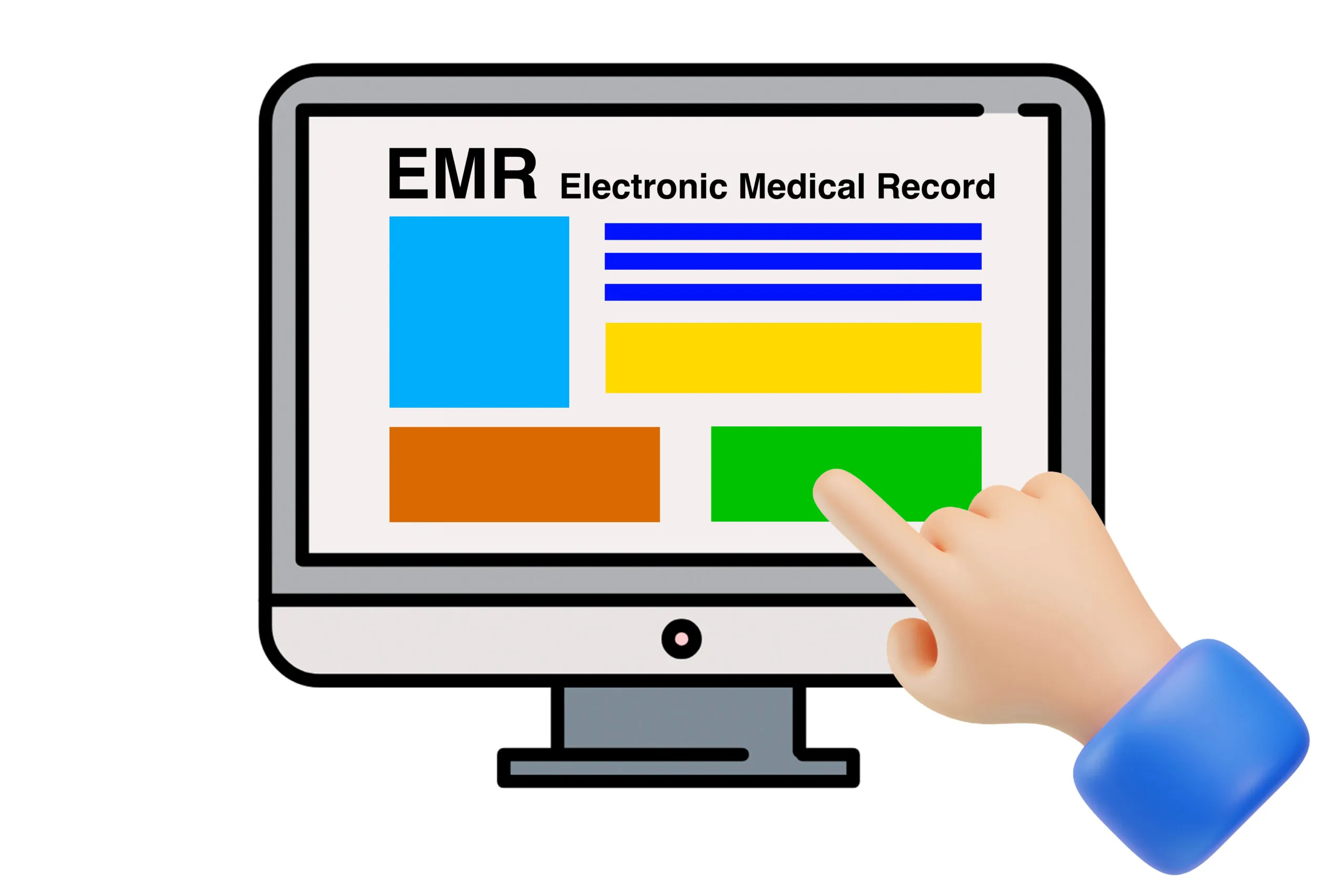The Role of Electronic Health Records in Medical Malpractice Lawsuits
EHR Errors and Medical Malpractice Lawsuits: Understanding Legal Risks and Prevention Strategies
Electronic Health Records (EHR) are now the backbone of modern healthcare, replacing traditional paper-based documentation. These digital systems improve efficiency, streamline communication between healthcare providers, and help maintain organized medical histories.
However, EHRs are not without flaws. Mistakes in digital records can lead to serious patient harm, including misdiagnoses, incorrect medication administration, and delayed treatment. When these errors contribute to medical malpractice, they become a legal liability for physicians, hospitals, and healthcare institutions.
This article explores common EHR errors, their impact on patient safety, their legal consequences, and how healthcare professionals can prevent documentation mistakes.
Understanding EHR Errors
EHR errors occur when inaccurate, incomplete, or misleading medical information is entered into a digital system. These errors may be caused by human oversight, system glitches, or unauthorized modifications.
Types of EHR Errors
- Auto-Fill Mistakes
Many EHR systems include auto-fill features designed to speed up documentation. While helpful, these tools can introduce errors by automatically inserting incorrect information. Physicians who rely on auto-fill without verifying the accuracy of populated data may inadvertently prescribe the wrong medication or enter an inaccurate diagnosis.
- Failure to Update Patient Records
Medical records must be updated in real-time to reflect new symptoms, allergies, test results, or treatment plans. When a provider fails to update a patient’s history, critical details may be missing, leading to incorrect or delayed medical decisions.
- Unauthorized Alterations and Tampering
In some malpractice cases, healthcare providers have been caught altering EHR records to hide mistakes or reduce liability. However, audit trails track every modification made to a digital record, making tampering easy to detect.
- System Glitches and Software Failures
EHR systems are prone to technical malfunctions that can cause data to disappear, duplicate, or be incorrectly assigned to another patient. These glitches may result in medical professionals making decisions based on inaccurate information.
- Duplicate or Conflicting Records
When multiple patient records exist for the same individual, it can create confusion and lead to mistakes in diagnosis or treatment. Duplicate records often occur due to clerical errors, such as misspellings or inconsistent identification details.
The Impact of EHR Errors on Patient Safety
EHR errors can directly affect patient health, leading to life-threatening complications. A single documentation mistake may cause delays in treatment, improper prescriptions, or even unnecessary medical procedures.
Delayed or Incorrect Treatments
When a physician relies on incorrect data in an EHR, they may provide the wrong treatment or delay necessary interventions. A missing lab result or an outdated diagnosis can result in prolonged suffering for the patient.
Misdiagnoses and Medication Errors
Auto-fill mistakes, outdated information, or incorrect record-keeping can result in a misdiagnosis. If a physician prescribes treatment based on incorrect medical history, the patient’s condition may worsen.
Legal Consequences for Healthcare Providers
From a legal standpoint, EHR errors can serve as strong evidence in medical malpractice cases. If an attorney can prove that an error in digital documentation directly contributed to a patient’s injury, the responsible healthcare provider may be held liable.
Legal Consequences of EHR Errors
When an EHR error leads to patient harm, it can result in a malpractice lawsuit. Attorneys and forensic experts analyze digital records to determine whether a healthcare provider failed to uphold the standard of care.
How Lawyers Prove EHR-Related Malpractice
- EHR Audit Trails as Evidence
Every modification made to an electronic health record is logged in an audit trail. If a provider edits or deletes an entry after an adverse medical event, the audit trail can reveal these changes. Unauthorized alterations can suggest an attempt to cover up an error, strengthening the patient’s case.
- Metadata Analysis
EHR metadata includes time stamps and access logs that show when a record was last updated and by whom. Lawyers analyze metadata to identify discrepancies between digital records and the actual events that took place.
- Comparing Paper and Digital Records
Some hospitals maintain both paper and electronic documentation. If there are inconsistencies between the two, it may indicate negligence or record tampering.
Medical and forensic IT experts may testify to explain how an EHR error contributed to a patient’s injury. Their analysis helps juries and judges understand the role of digital documentation in malpractice cases.
Notable EHR-Related Malpractice Cases
Case Study 1: Medication Overdose Due to an EHR Auto-Fill Error
A hospital in Florida faced a malpractice lawsuit after an EHR system auto-filled an incorrect medication dosage. The duplicate entry led to an overdose, causing severe complications for the patient. The hospital was found liable for failing to implement proper safeguards.
Case Study 2: EHR Tampering in a Surgical Error Case
A New York surgeon attempted to alter a patient’s digital record after a surgical mistake. The audit trail exposed unauthorized changes, and the physician was found guilty of medical malpractice. This case highlighted the importance of audit trails in legal investigations.
Defending Against EHR-Related Malpractice Claims
Healthcare providers can take proactive steps to reduce their risk of liability and ensure accurate documentation.
Best Practices for Accurate EHR Documentation
- Double-Check Auto-Fill Entries
Physicians and nurses should verify auto-populated data before finalizing medical records. Reviewing entries ensures that the system has not inserted incorrect information.
- Update Patient Records in Real-Time
All new symptoms, diagnoses, and treatments should be recorded immediately. Delayed updates can create gaps in medical history, increasing the risk of patient harm.
- Implement Access Controls
Limiting access to EHR systems reduces the risk of unauthorized modifications. Only authorized personnel should be able to edit patient records.
- Conduct Regular EHR Audits
Periodic audits help identify errors before they lead to malpractice claims. Reviewing documentation ensures compliance with regulations and best practices.
Regulatory and Compliance Considerations
HIPAA Regulations and Data Integrity
The Health Insurance Portability and Accountability Act (HIPAA) sets strict standards for protecting patient information in digital records. Violations due to EHR errors, such as improper data handling or unauthorized modifications, can result in severe fines and penalties.
State Laws Governing EHR Documentation
Different states have varying regulations on how long EHR records must be retained and what modifications are permissible. Healthcare providers must stay informed about their state’s laws to ensure compliance.
Preventing EHR Errors in Medical Practice
Training Healthcare Professionals
Ongoing education for physicians, nurses, and administrative staff is essential for preventing EHR-related mistakes. Training should focus on recognizing auto-fill errors, updating records correctly, and avoiding common documentation pitfalls.
Leveraging AI and Technology
Artificial intelligence and machine learning tools can help detect inconsistencies in digital records. AI-powered systems can flag suspicious entries, reducing the risk of documentation errors.
Future of EHR Technology
Upcoming advancements in EHR systems aim to improve accuracy and security. Blockchain technology offers a tamper-proof solution for maintaining digital records, while enhanced user interfaces will make data entry more intuitive and error-resistant.
Frequently Asked Questions (FAQs)
Can an EHR error be used as evidence in a malpractice case?
Yes, EHR errors can serve as critical evidence in medical malpractice lawsuits. Digital records provide time-stamped data on patient interactions, treatments, and modifications. Lawyers often analyze audit trails and metadata to determine if documentation mistakes contributed to patient harm or if records were altered after an adverse event.
How do electronic health records impact medical lawsuits?
EHRs play a crucial role in malpractice cases because they contain a detailed history of a patient’s medical treatment. Inaccuracies, missing information, or unauthorized modifications can be used to establish negligence. If an error in an EHR contributed to a misdiagnosis, incorrect medication, or treatment delay, it could form the basis of a legal claim.
What happens if a doctor falsifies an EHR?
Falsifying an EHR is a serious offense that can lead to legal and professional consequences. Audit trails track every change made to a digital record, including the time of modification and the user responsible. If a doctor alters records to cover up an error or mislead investigators, it can result in malpractice liability, loss of medical licensure, and even criminal charges in extreme cases.
Can missing data in an EHR lead to a malpractice lawsuit?
Yes, missing data can contribute to medical errors and serve as grounds for a malpractice lawsuit. If crucial information such as allergies, test results, or medication changes is absent from a patient’s record, it can lead to incorrect treatment decisions. Healthcare providers are responsible for ensuring that patient records are complete and up to date.
How do lawyers prove medical negligence with EHR records?
Attorneys use several strategies to prove negligence with EHR records. They examine audit trails to identify unauthorized changes, analyze metadata to confirm whether documentation was updated in real-time, and compare digital records with paper charts or witness testimonies. Expert witnesses, such as medical professionals and forensic IT specialists, may also testify on how the EHR error contributed to patient harm.
Contact Rafferty Domnick Cunningham & Yaffa Today
EHR errors present significant risks to both patient safety and legal liability. Physicians and healthcare providers must take proactive steps to ensure accurate documentation, prevent unauthorized changes, and comply with regulatory requirements.
By adopting best practices, conducting regular audits, and utilizing advanced technology, healthcare institutions can reduce their exposure to malpractice lawsuits. EHR systems should serve as reliable tools for enhancing patient care, not as sources of medical and legal complications.
If you or a loved one has suffered harm due to an EHR-related medical malpractice case, consulting an experienced medical malpractice attorney can provide valuable guidance. A lawyer can analyze audit trails, investigate documentation errors, and help pursue justice.
For legal assistance with EHR-related malpractice claims, contact Rafferty Domnick Cunningham & Yaffa today.


